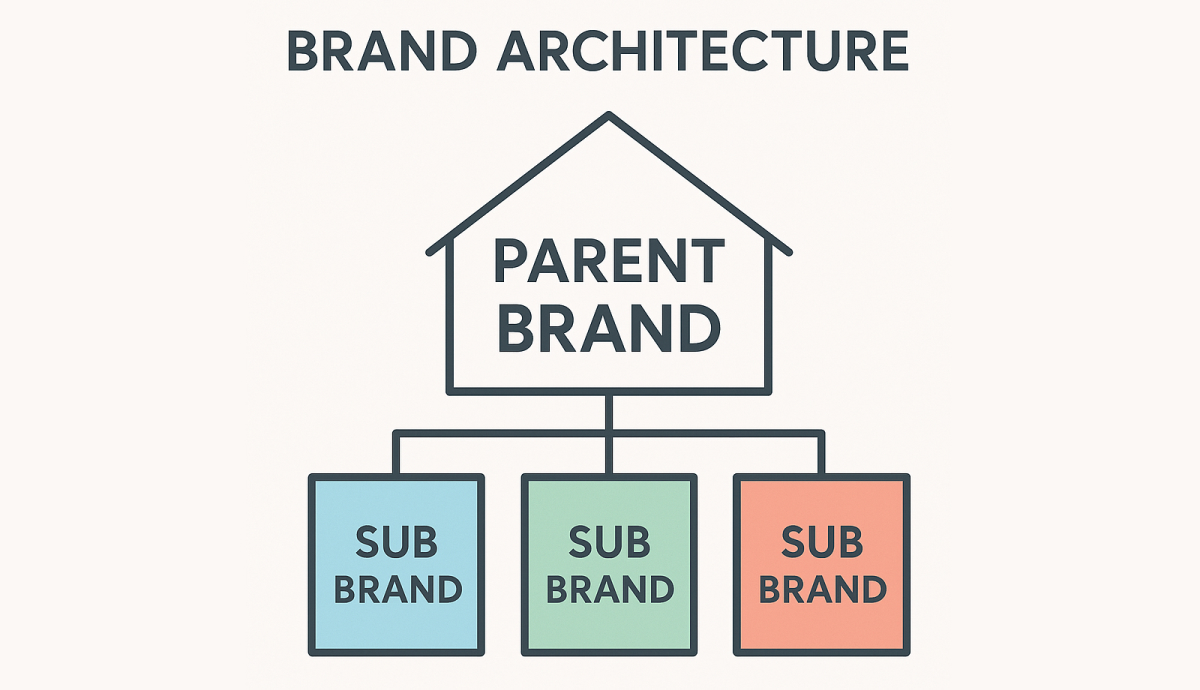In the world of enterprises, brand architecture isn’t just about logos and taglines. It is about how you put together a chaotic family reunion party. A family that is dysfunctional at best and lobbying for separate rooms at worst.
The notion of a neat family tree where everyone gets along, is fantasy. The reality is a far cry from this romantic idea. So a brand strategy or deciding the brand architecture is not a checklist but a chessboard. In fact, I call it an art because you don’t follow hard rules. They are guidelines at best. It is about creating structures that grow, flex, and speak to customers, investors, and employees differently. Yet harmoniously.
Organisations like family, are unique. There are those tight -knit surname -sharing kind, Scattered clan, estranged cousins with an odd cool uncle and many more.
Let us decode the Brand Family, one eccentric relative at a time.
Branded House :
The classic Indian joint family. One house, one name, one loud dinner table.
Everyone shares the same surname and probably the same group chat. Think Google, FedEx, Samsung. The head of the family is front and centre, calling the shots.
The powerful and respected legacy of the Matriarch / Patriarch as the head of the family is a key feature. Works best when there is coherence across offerings.
Imagine a family where everyone is in uniform with the Dad’s name stitched right on the chest.
House of Brands (Independent)
No one shares the last name. Each one does their own thing, lives in different cities. They may or may not return the calls. Every one attends the marriage but they may not know who is getting married. Yet they are a family.
Think Unilever, P&G, Marico. The parent stays in the shadows while the kids build their own empires. Works best for companies with distinct market plays or global ambitions.
Hey I am Axe and you are? Nice to meet you Axe, I am Dove. (They don’t know they are related).
Endorsed Brands
Think of a family where the kids do their own thing but know that they have a famous surname of a cool uncle backing them up. Like being a Kapoor in Bollywood. You will get the audition.
These siblings enjoy the best of both worlds. Freedom and Trust.
Of course, The degree and intensity of endorsement varies
- Linked Endorsement:
Think of a family that keeps it subtle. It’s like your cousin who only tags you on social media because your dad is famous, but never invites you to parties Not attending each other’s wedding. Think, Nestle, Kit Kat, Sony Play Station. The parent is visible but the brand shines solo.
- Strong Endorsement:
The Helicopter parenting style. The parent brand is loud and proud and hovers all over the sub-brand. Apple Pay, Kellog’s Cornflakes, Courtyard by Marriot. It is like this dominating control freak of a Dad, who constantly reminds his sons, “You will never make it without me”.
- Token Endorsement:
Think of a rich kid whose parent is barely noticeable but we know they are there. At the right time the dad shows up and says, yes this one is ours. The boy acts humble but drives home in the family luxury car. Lexus (by Toyota), Post-It (By 3M), Maggi (By Nestle).
- Shadow Endorsement:
No one talks about the parent. But behind every spend there is dad’s legacy money. It’s almost as if the kid is a secret love child. Land Rover (Toyota), Venmo (Pay Pal), Ritz Carlton (Marriot). The sons could brag and claim that they got there on their own but we will secretly say “No you didn’t”.
The Hybrid House
The modern blended family. Some share family names, some don’t. Some show up for the family weddings. Some fly solo while some wear the uniform with Dad’s name on the right chest. It’s like a family with one quiet artist cousin who is happy to be left alone, a rogue uncle who is constantly eyeing the top seat and few brothers who are happy what-ever be the arrangement.
Final Thoughts
Choosing brand architecture isn’t just a strategy. It is an art. It is a lifestyle. Whether you are a proudly unified house living in a family mansion or members living in different cities, doing their own thing, the key is clarity. Know who’s related, who’s adopted, and who just shows up for the perks.
Because in the end, all brand families are a little dysfunctional.
But the smart ones make it look like legacy.








